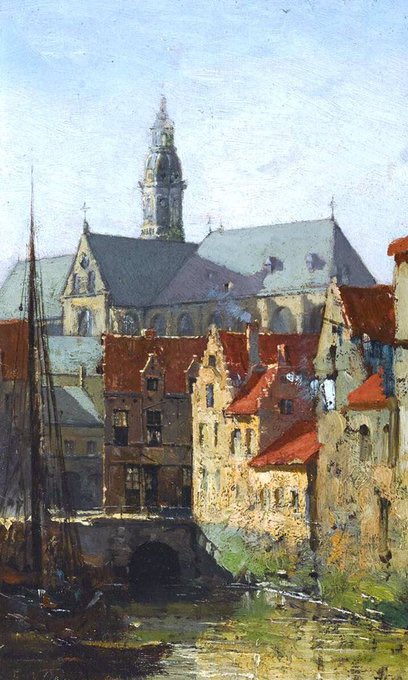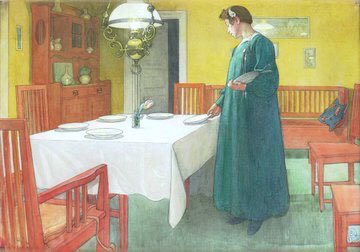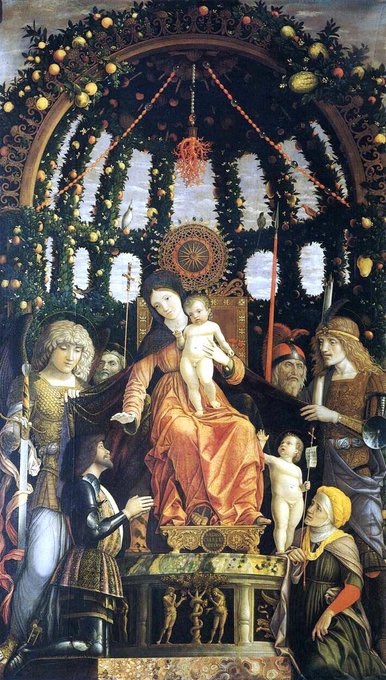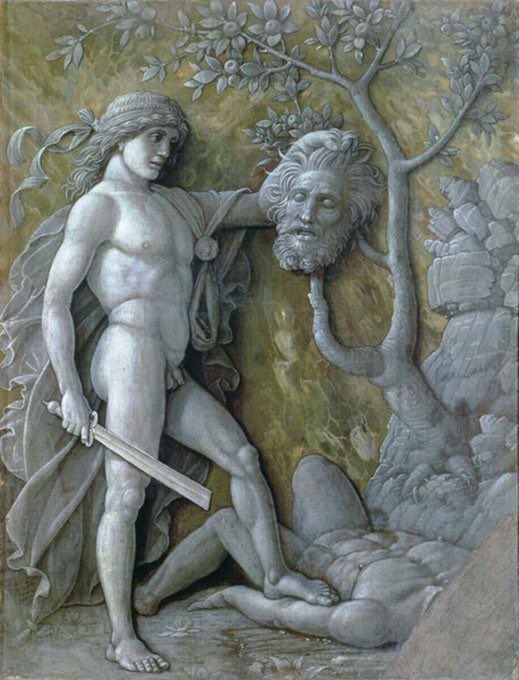Another theme was depicting Dublin. He did this in such a way as to bring the past to life & give an idea of Victorian & Edwardian life in the Capital. His Tea in the Garden depicts almost life sized figures under a stunning blue of leafy light. Although unfinished I love it!
His talent was recognised & he went on to study in Antwerp. There he won the Taylor Prize in 1881 & again in 1882. The prize had allowed him to travel to Belgium & expand his knowledge.
Larsson considered his frescoes & murals his most important work & was disappointed that they did not receive the attention he felt they deserved. Entry of King Gustav (1908), The Household (1908), The Study Room (1908) & the Bedroom (1909)
Thanks to Larsson we have a tremendous record of the life of a creative family. His wife was an accomplished interior designer. Lisbeth Reading (1904), My Eldest Daughter (1904), Evening Meal (1905) & Karin by the Linen Cupboard (1906)
@PipalwaRohan I’ve no idea, but it is certainly legal to have an ‘upper mouth beard’ under Irish human rights laws as it was a racist ban to discriminate against the ‘mere’ or ‘wilde’ Irish. You can see how in this Dürer 1521 print:
Mantegna’s work fascinates due to his constant attempt to place biblical events within an archaeologically accurate context - representative of Renaissance learning. His Madonnas are, however, some of the most beautiful examples of Maternal.
The Triumphs of Caesar (1484-92) are 9 works by Mantegna which have been described as his masterpiece. They were painted for Mantua but acquired by Charles I of England in 1629. They have been badly degraded over time but are still an impressive reconstruction of a Roman Triumph
Three of his greatest works are mythological Parnassus (1497), Triumph of the Virtues (1499-1502) & Minerva (1502). Parnassus & the Triumph were for the important patron Isabella d’Este’s study. They have bewitched ever since their creation.
He continued to explore the subject of the Holy Family in intimate devotionary works as well as large altarpieces. The Holy Family (1495-1500) & Madonna of the Victory (1496). The latter shows Francesco Gonzaga adoring the Virgin. The Red Coral above Her symbolises the Passion
One great interest of his was grisaile paintings. They are designed to look like carved stone & reflect on his interest in antiquity. These include David & Goliath (1490-5), Samson & Goliath (c1500), Judith with Head of Holofernes (1495) & Judgement of Solomon (c1500)































